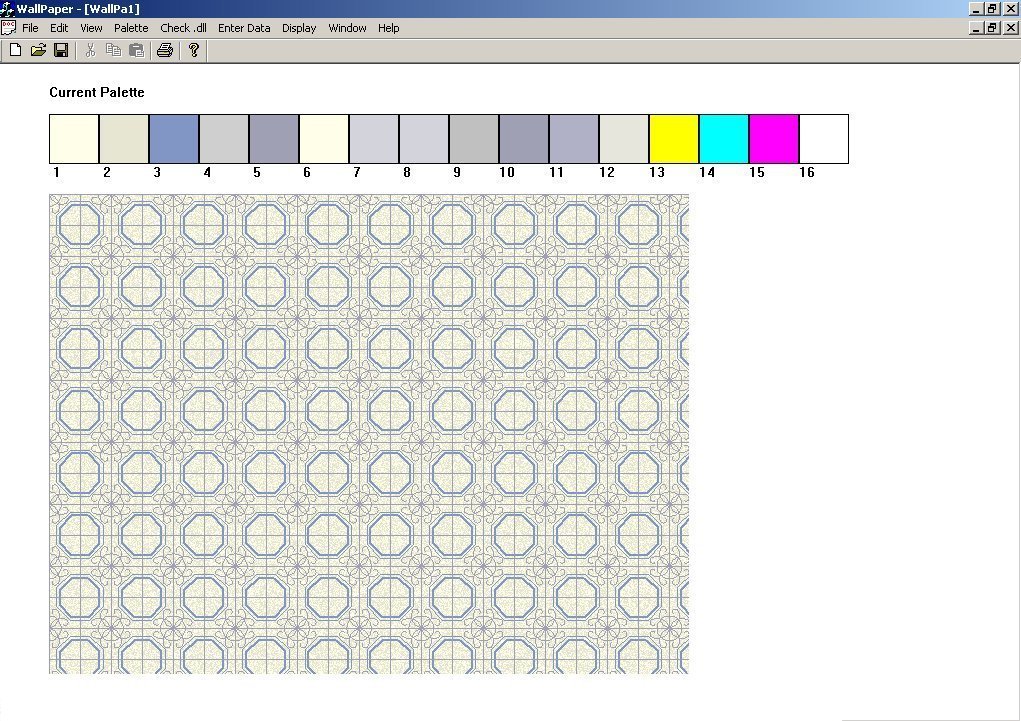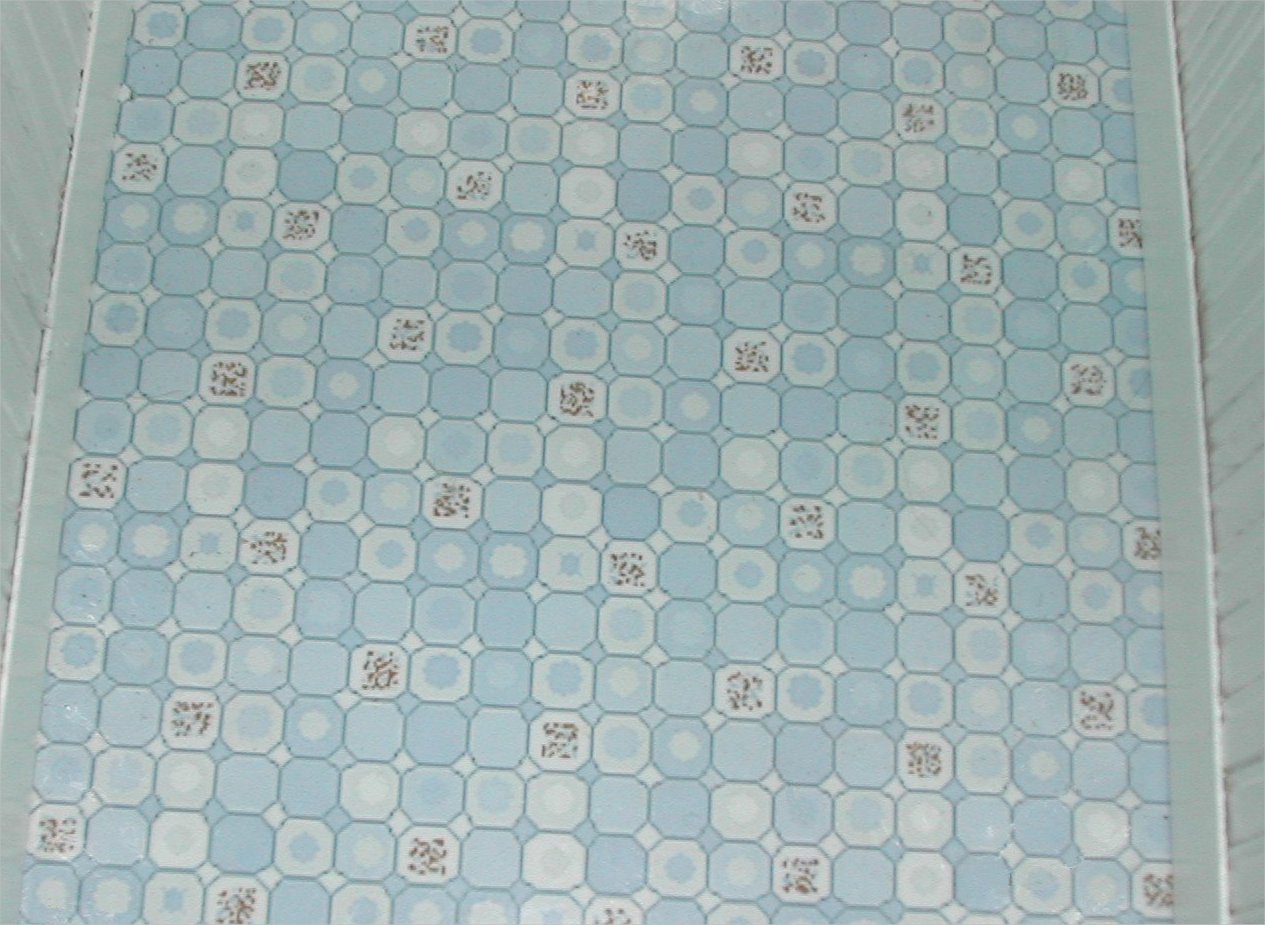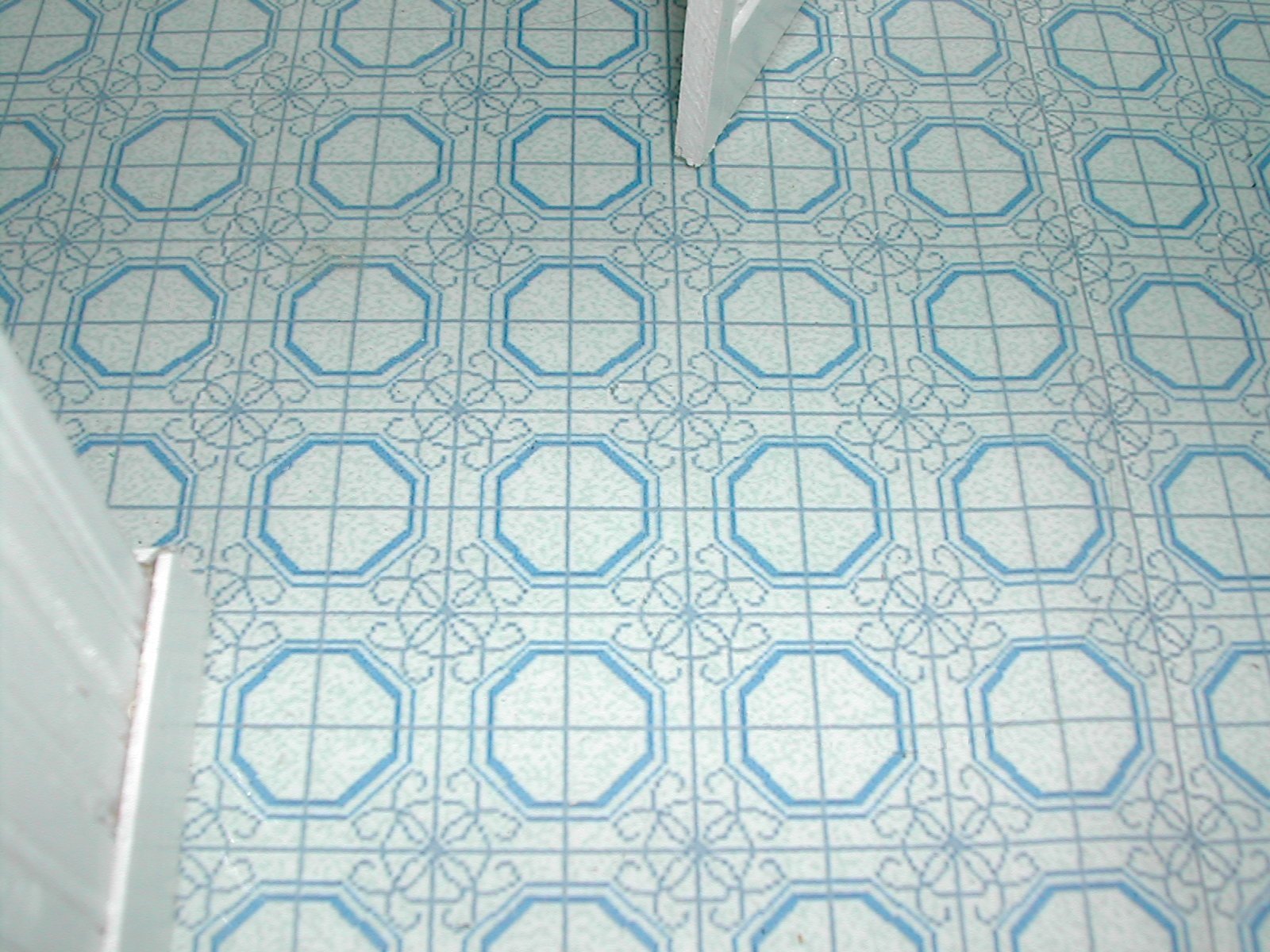There are only four areas of the
house
that have floors other than wood: the two bathrooms, the first floor
coat closet and the pantry.
Several ways of making linoleum were tried. In order to create
both linoleum and wallpapers, Olof created a computer program
that allowed using one hand drawn tile to be repeated so that wallpaper
could be manufactured. After Olof drew the pattern, the coloring was
done by Eve, using the special program Olof created that allowed for
very fine
tuning of the colors. The pattern was defined by numbered curves, each
of which could be colored separately. The program also contained a
"trend" feature that allowed a color to go from light to dark and the
proper shade was chosen for each defined curve.
To the right you see one
pattern as it appears in the wallpaper/tile creating program with the
color bar on the top from which the colors for this particular pattern
were chosen.
|
 |
Here is the pattern for the downstairs bathroom, the pantry and the
hall coat
closet floor. It is colored in
the same way the linoleum in the full size house is colored.
|
 |
The larger pattern, to the right,
matches the second story bathroom floor.
It took several
tries
before the proper method of applying the pattern to the floor was
perfected. The first time we tried to glue the paper to a cardboard
that
was cut to match the size and shape of the room, but the glue
stained
through the paper. We immediately realized that adding a coating of
thin lacquer
to gain a shine was not going to work well either because the colors
would bleed when wet.
Other
experiments were
done and the final solution was to print out the paper and then cover
it with a laminating sheet. This method not only gave stiffness to the
paper but also provided a nice shiny surface that is basically
indestructible.
|
 |
